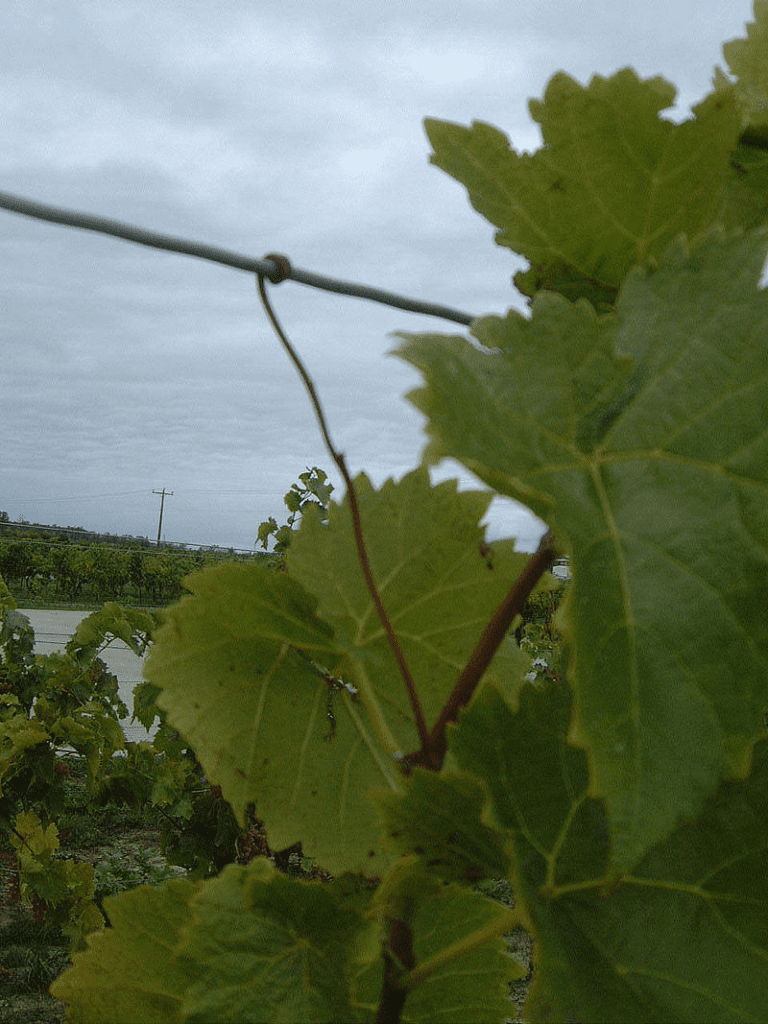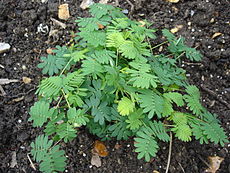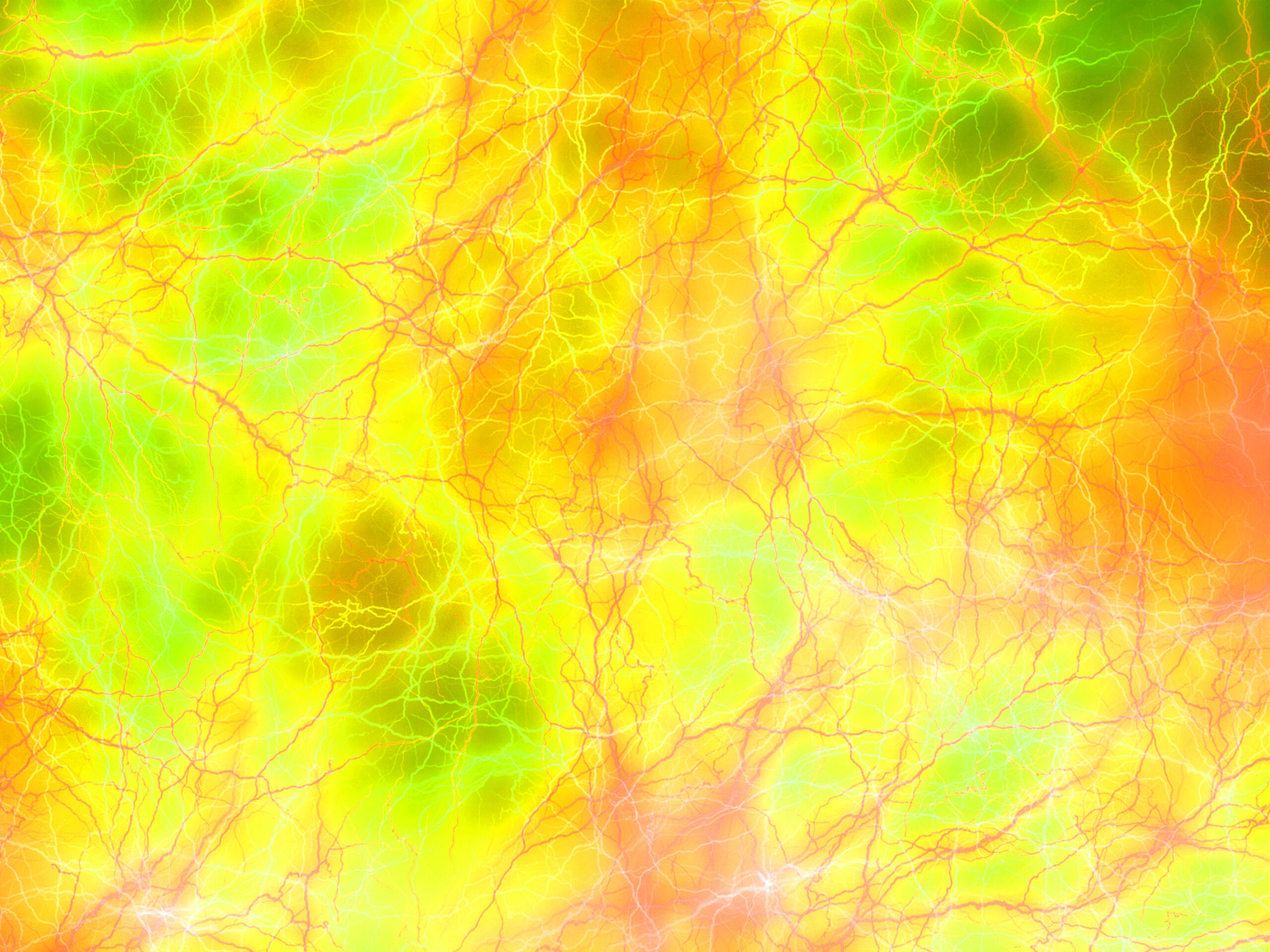
Plant perception is the ability of plants to sense and respond to the environment by adjusting their morphology and physiology. Botanical research has revealed that plants are capable of reacting to a broad range of stimuli, including chemicals, gravity, light, moisture, infections, temperature, oxygen and carbon dioxide concentrations, parasite infestation, disease, physical disruption, sound, and touch. The scientific study of plant perception is informed by numerous disciplines, such as plant physiology, ecology, and molecular biology.
- Trewavas A (September 2005). “Green plants as intelligent organisms”. Trends in Plant Science. 10 (9): 413–9. doi:10.1016/j.tplants.2005.07.005. PMID 16054860.
- Gagliano M, Mancuso S, Robert D (June 2012). “Towards understanding plant bioacoustics”. Trends in Plant Science. 17 (6): 323–5. doi:10.1016/j.tplants.2012.03.002. PMID 22445066.
- Gagliano M (July 2013). “Green symphonies: a call for studies on acoustic communication in plants”. Behavioral Ecology. 24 (4): 789–796. doi:10.1093/beheco/ars206. PMC 3677178. PMID 23754865.
- Gagliano M, Grimonprez M, Depczynski M, Renton M (May 2017). “Tuned in: plant roots use sound to locate water”. Oecologia. 184 (1): 151–160. Bibcode:2017Oecol.184..151G. doi:10.1007/s00442-017-3862-z. PMID 28382479. S2CID 5231736.
- Mishra RC, Ghosh R, Bae H (August 2016). “Plant acoustics: in the search of a sound mechanism for sound signaling in plants”. Journal of Experimental Botany. 67 (15): 4483–94. doi:10.1093/jxb/erw235. PMID 27342223.
This article is about the physiology of normal perception in multicellular plants. For pseudoscientific theories regarding paranormal emotion and perception in plants, see Plant perception (paranormal).
Aspects of perception
Light
Main articles: Phototropism, photomorphogenesis, photoperiodism, and shade avoidance

Many plant organs contain photoreceptors (phototropins, cryptochromes, and phytochromes), each of which reacts very specifically to certain wavelengths of light. These light sensors tell the plant if it is day or night, how long the day is, how much light is available, and where the light is coming from. Shoots generally grow towards light, while roots grow away from it, responses known as phototropism and skototropism, respectively. They are brought about by light-sensitive pigments like phototropins and phytochromes and the plant hormone auxin.
Many plants exhibit certain behaviors at specific times of the day; for example, flowers that open only in the mornings. Plants keep track of the time of day with a circadian clock. This internal clock is synchronized with solar time every day using sunlight, temperature, and other cues, similar to the biological clocks present in other organisms. The internal clock coupled with the ability to perceive light also allows plants to measure the time of the day and so determine the season of the year. This is how many plants know when to flower (see photoperiodism). The seeds of many plants sprout only after they are exposed to light. This response is carried out by phytochrome signalling. Plants are also able to sense the quality of light and respond appropriately. For example, in low light conditions, plants produce more photosynthetic pigments. If the light is very bright or if the levels of harmful ultraviolet radiation increase, plants produce more of their protective pigments that act as sunscreens.
- Mishra RC, Ghosh R, Bae H (August 2016). “Plant acoustics: in the search of a sound mechanism for sound signaling in plants”. Journal of Experimental Botany. 67 (15): 4483–94. doi:10.1093/jxb/erw235. PMID 27342223.
- Harmer SL, Panda S, Kay SA (2001). “Molecular bases of circadian rhythms”. Annual Review of Cell and Developmental Biology. 17: 215–53. doi:10.1146/annurev.cellbio.17.1.215. PMID 11687489.
- Strong, Donald R.; Ray, Thomas S. (1 January 1975). “Host Tree Location Behavior of a Tropical Vine (Monstera gigantea) by Skototropism”. Science. 190 (4216): 804–806. Bibcode:1975Sci…190..804S. doi:10.1126/science.190.4216.804. JSTOR 1741614. S2CID 84386403.
- Strid Å, Porra RJ (1992). “Alterations in Pigment Content in Leaves of Pisum sativum After Exposure to Supplementary UV-B”. Plant and Cell Physiology. 33 (7): 1015–1023. Archived from the original on 26 April 2010.
Gravity
Main article: Gravitropism
To orient themselves correctly, plants must be able to sense the direction of gravity. The subsequent response is known as gravitropism.
In roots, gravity is sensed and translated in the root tip, which then grows by elongating in the direction of gravity. In shoots, growth occurs in the opposite direction, a phenomenon known as negative gravitropism. Poplar stems can detect reorientation and inclination (equilibrioception) through gravitropism.
- Freeman S (2014). Biological science. Illinois: Pearson. p. 803. ISBN 978-0-321-74367-1. OCLC 821271420.
- Azri W, Chambon C, Herbette S, Brunel N, Coutand C, Leplé JC, Ben Rejeb I, Ammar S, Julien JL, Roeckel-Drevet P (June 2009). “Proteome analysis of apical and basal regions of poplar stems under gravitropic stimulation”. Physiologia Plantarum. 136 (2): 193–208. doi:10.1111/j.1399-3054.2009.01230.x. PMID 19453506.

At the root tip, amyloplasts containing starch granules fall in the direction of gravity. This weight activates secondary receptors, which signal to the plant the direction of the gravitational pull. After this occurs, auxin is redistributed through polar auxin transport and differential growth towards gravity begins. In the shoots, auxin redistribution occurs in a way to produce differential growth away from gravity.
For perception to occur, the plant often must be able to sense, perceive, and translate the direction of gravity. Without gravity, proper orientation will not occur and the plant will not effectively grow. The root will not be able to uptake nutrients or water, and the shoot will not grow towards the sky to maximize photosynthesis.
- Perrin RM, Young LS, Murthy UM, Harrison BR, Wang Y, Will JL, Masson PH (October 2005). “Gravity signal transduction in primary roots”. Annals of Botany. 96 (5): 737–43. doi:10.1093/aob/mci227. PMC 4247041. PMID 16033778.
Touch
Main articles: Thigmotropism and thigmomorphogenesis


All plants are able to sense touch. Thigmotropism is directional movement that occurs in plants responding to physical touch. Climbing plants, such as tomatoes, exhibit thigmotropism, allowing them to curl around objects. These responses are generally slow (on the order of multiple hours), and can best be observed with time-lapse cinematography, but rapid movements can occur as well. For example, the so-called “sensitive plant” (Mimosa pudica) responds to even the slightest physical touch by quickly folding its thin pinnate leaves such that they point downwards, and carnivorous plants such as the Venus flytrap (Dionaea muscipula) produce specialized leaf structures that snap shut when touched or landed upon by insects. In the Venus flytrap, touch is detected by cilia lining the inside of the specialized leaves, which generate an action potential that stimulates motor cells and causes movement to occur.
- Braam, Janet (February 2005). “In touch: plant responses to mechanical stimuli”. New Phytologist. 165 (2): 373–389. doi:10.1111/j.1469-8137.2004.01263.x. ISSN 0028-646X. PMID 15720650.
- Jaffe MJ, Forbes S (February 1993). “Thigmomorphogenesis: the effect of mechanical perturbation on plants”. Plant Growth Regulation. 12 (3): 313–24. doi:10.1007/BF00027213. PMID 11541741. S2CID 29466083.
- Fearnley, Kirsten (3 May 2016). “Weird & Wonderful Creatures: The Sensitive Plant”. American Association for the Advancement of Science. American AAAS. Retrieved 23 February 2021.
when it is touched, its leaves fold up and its branches droop, leaving it looking dead or sick in a matter of seconds
- Volkov AG, Adesina T, Jovanov E (1 May 2007). “Closing of Venus Flytrap by Electrical Stimulation of Motor Cells”. Plant Signaling & Behavior. 2 (3): 139–145. doi:10.4161/psb.2.3.4217. PMC 2634039. PMID 19516982 – via Taylor & Francis Group.
Smell
Wounded or infected plants produce distinctive volatile odors, (e.g. methyl jasmonate, methyl salicylate, green leaf volatiles), which can in turn be perceived by neighboring plants. Plants detecting these sorts of volatile signals often respond by increasing their chemical defenses or and prepare for attack by producing chemicals which defend against insects or attract insect predators.
- Farmer EE, Ryan CA (October 1990). “Interplant communication: airborne methyl jasmonate induces synthesis of proteinase inhibitors in plant leaves”. Proceedings of the National Academy of Sciences of the United States of America. 87 (19): 7713–6. Bibcode:1990PNAS…87.7713F. doi:10.1073/pnas.87.19.7713. PMC 54818. PMID 11607107.
- Mirabella, R., H. Rauwerda, S. Allmann, A. Scala, E. A. Spyropoulou, M. de Vries, M. R. Boersma, T. M. Breit, M. A. Haring, and R. C. Schuurink. 2015. WRKY40 and WRKY6 act downstream of the green leaf volatile E-2-hexenal in Arabidopsis. The Plant Journal 83:1082–1096.
Vibration
Plants upregulate chemical defenses such as glucosinolate and anthocyanin in response to vibrations created during herbivory.
- Appel, H. M.; Cocroft, R. B. (2014). “Plants respond to leaf vibrations caused by insect herbivore chewing”. Oecologia. 175 (4): 1257–1266. Bibcode:2014Oecol.175.1257A. doi:10.1007/s00442-014-2995-6. ISSN 0029-8549. PMC 4102826. PMID 24985883.
Signal transduction
Plant hormones and chemical signals
Further information: Plant hormone
Plants systematically use hormonal signalling pathways to coordinate their development and morphology.
Plants produce several signal molecules usually associated with animal nervous systems, such as glutamate, GABA, acetylcholine, melatonin, and serotonin. They may also use ATP, NO, and ROS for signaling in similar ways as animals do.
- Akula, R., and S. Mukherjee. 2020. New insights on neurotransmitters signaling mechanisms in plants. Plant Signaling & Behavior 15:1737450. Taylor & Francis.
- Baluška F, Volkmann D, Mancuso S (2006). Communication in Plants: Neuronal Aspects of Plant Life. Springer Verlag. ISBN 978-3-540-28475-8.
Electrophysiology
Plants have a variety of methods of delivering electrical signals. The four commonly recognized propagation methods include action potentials (APs), variation potentials (VPs), local electric potentials (LEPs), and systemic potentials (SPs)
- Fromm, Jörg; Lautner, Silke (March 2007). “Electrical signals and their physiological significance in plants: Electrical signals in plants”. Plant, Cell & Environment. 30 (3): 249–257. doi:10.1111/j.1365-3040.2006.01614.x. PMID 17263772.
- Huber, Annika E.; Bauerle, Taryn L. (March 2016). “Long-distance plant signaling pathways in response to multiple stressors: the gap in knowledge”. Journal of Experimental Botany. 67 (7): 2063–2079. doi:10.1093/jxb/erw099. ISSN 0022-0957. PMID 26944636.
- Szechyńska-Hebda, Magdalena; Lewandowska, Maria; Karpiński, Stanisław (14 September 2017). “Electrical Signaling, Photosynthesis and Systemic Acquired Acclimation”. Frontiers in Physiology. 8: 684. doi:10.3389/fphys.2017.00684. ISSN 1664-042X. PMC 5603676. PMID 28959209.
Although plant cells are not neurons, they can be electrically excitable and can display rapid electrical responses in the form of APs to environmental stimuli. APs allow for the movement of signaling ions and molecules from the pre-potential cell to the post-potential cell(s). These electrophysiological signals are constituted by gradient fluxes of ions such as H+, K+, Cl−, Na+, and Ca2+ but it is also thought that other electrically charge ions such as Fe3+, Al3+, Mg2+, Zn2+, Mn2+, and Hg2+ may also play a role in downstream outputs. The maintenance of each ions electrochemical gradient is vital in the health of the cell in that if the cell would ever reach equilibrium with its environment, it is dead. This dead state can be due to a variety of reasons such as ion channel blocking or membrane puncturing.
- Awan, Hamdan; Adve, Raviraj S.; Wallbridge, Nigel; Plummer, Carrol; Eckford, Andrew W. (January 2019). “Communication and Information Theory of Single Action Potential Signals in Plants”. IEEE Transactions on NanoBioscience. 18 (1): 61–73. arXiv:1811.03612. doi:10.1109/tnb.2018.2880924. ISSN 1536-1241. PMID 30442613. S2CID 53210689.
- Baluška, František; Mancuso, Stefano (1 January 2013). “Ion channels in plants”. Plant Signaling & Behavior. 8 (1): e23009. doi:10.4161/psb.23009. PMC 3745586. PMID 23221742.
- Loof, Arnold De (2 September 2016). “The cell’s self-generated “electrome”: The biophysical essence of the immaterial dimension of Life?”. Communicative & Integrative Biology. 9 (5): e1197446. doi:10.1080/19420889.2016.1197446. PMC 5100658. PMID 27829975.
These electrophysiological ions bind to receptors on the receiving cell causing downstream effects result from one or a combination of molecules present. This means of transferring information and activating physiological responses via a signaling molecule system has been found to be faster and more frequent in the presence of APs.
- Awan, Hamdan; Adve, Raviraj S.; Wallbridge, Nigel; Plummer, Carrol; Eckford, Andrew W. (January 2019). “Communication and Information Theory of Single Action Potential Signals in Plants”. IEEE Transactions on NanoBioscience. 18 (1): 61–73. arXiv:1811.03612. doi:10.1109/tnb.2018.2880924. ISSN 1536-1241. PMID 30442613. S2CID 53210689.
These action potentials can influence processes such as actin-based cytoplasmic streaming, plant organ movements, wound responses, respiration, photosynthesis, and flowering. These electrical responses can cause the synthesis of numerous organic molecules, including ones that act as neuroactive substances in other organisms such as calcium ions.
- Wagner E, Lehner L, Normann J, Veit J, Albrechtova J (2006). “Hydroelectrochemical integration of the higher plant—basis for electrogenic flower induction”. In Baluska F, Mancuso S, Volkmann D (eds.). Communication in plants: neuronal aspects of plant life. Berlin: Springer. pp. 369–389.
- Fromm J, Lautner S (March 2007). “Electrical signals and their physiological significance in plants”. Plant, Cell & Environment. 30 (3): 249–257. doi:10.1111/j.1365-3040.2006.01614.x. PMID 17263772.
- Zimmermann MR, Maischak H, Mithöfer A, Boland W, Felle HH (March 2009). “System potentials, a novel electrical long-distance apoplastic signal in plants, induced by wounding”. Plant Physiology. 149 (3): 1593–600. doi:10.1104/pp.108.133884. PMC 2649404. PMID 19129416.
- Pickard BG (1973). “Action Potentials in Higher Plants”. Botanical Review. 39 (2): 172–201. doi:10.1007/BF02859299. JSTOR 4353850. S2CID 5026557.
- Zimmermann, Matthias; Mithöfer, Axel; Will, Torsten; Felle, Hubert; Furch, Alexandra (12 February 2016). “Herbivore-Triggered Electrophysiological Reactions: Candidates for Systemic Signals in Higher Plants and the Challenge of Their Identification”. Plant Physiology. 170 (4): 2407–2419. doi:10.1104/pp.15.01736. PMC 4825135. PMID 26872949.
The ion flux across cells also influence the movement of other molecules and solutes. This changes the osmotic gradient of the cell, resulting in changes to turgor pressure in plant cells by water and solute flux across cell membranes. These variations are vital for nutrient uptake, growth, many types of movements (tropisms and nastic movements) among other basic plant physiology and behavior. (Higinbotham 1973; Scott 2008; Segal 2016).
- Segal Anthony W. (2016). “NADPH oxidases as electrochemical generators to produce ion fluxes and turgor in fungi, plants and humans”. Open Biology. 6 (5): 160028. doi:10.1098/rsob.160028. PMC 4892433. PMID 27249799.
- Scott, Peter (2008). Physiology and Behaviour of Plants. West Sussex, England: John Wiley and Sons, Ltd. ISBN 978-0-470-85024-4.
Thus, plants achieve behavioural responses in environmental, communicative, and ecological contexts.
Signal perception
Plant behavior is mediated by phytochromes, kinins, hormones, antibiotic or other chemical release, changes of water and chemical transport, and other means.
Plants have many strategies to fight off pests. For example, they can produce a slew of different chemical toxins against predators and parasites or they can induce rapid cell death to prevent the spread of infectious agents. Plants can also respond to volatile signals produced by other plants. Jasmonate levels also increase rapidly in response to mechanical perturbations such as tendril coiling.
- Farmer EE, Ryan CA (October 1990). “Interplant communication: airborne methyl jasmonate induces synthesis of proteinase inhibitors in plant leaves”. Proceedings of the National Academy of Sciences of the United States of America. 87 (19): 7713–6. Bibcode:1990PNAS…87.7713F. doi:10.1073/pnas.87.19.7713. PMC 54818. PMID 11607107.
- Karban R, Baxter KJ (2001). “Induced Resistance in Wild Tobacco with Clipped Sagebrush Neighbors: The Role of Herbivore Behavior”. Journal of Insect Behavior. 14 (2): 147–156. doi:10.1023/A:1007893626166. S2CID 33992175.
- Falkenstein E, Groth B, Mithöfer A, Weiler EW (October 1991). “Methyljasmonate and α-linolenic acid are potent inducers of tendril coiling”. Planta. 185 (3): 316–22. doi:10.1007/BF00201050. PMID 24186412. S2CID 23326940.
In plants, the mechanism responsible for adaptation is signal transduction.
- Scheel D, Wasternack C (2002). Plant signal transduction. Oxford: Oxford University Press. ISBN 0-19-963879-9.
- Xiong L, Zhu JK (June 2001). “Abiotic stress signal transduction in plants: Molecular and genetic perspectives”. Physiologia Plantarum. 112 (2): 152–166. doi:10.1034/j.1399-3054.2001.1120202.x. PMID 11454221.
- Clark GB, Thompson G, Roux SJ (January 2001). “Signal transduction mechanisms in plants: an overview”. Current Science. 80 (2): 170–7. PMID 12194182.
- Trewavas A (April 1999). “How plants learn”. Proceedings of the National Academy of Sciences of the United States of America. 96 (8): 4216–8. Bibcode:1999PNAS…96.4216T. doi:10.1073/pnas.96.8.4216. PMC 33554. PMID 10200239.
Adaptive responses include:
- Active foraging for light and nutrients. They do this by changing their architecture, e.g. branch growth and direction, physiology, and phenotype.
- Leaves and branches being positioned and oriented in response to a light source.
- Detecting soil volume and adapting growth accordingly, independently of nutrient availability.
- Defending against herbivores.
- De Kroon H, Hutchings MJ (1995). “Morphological plasticity in clonal plants: the foraging concept reconsidered”. J. Ecol. 83 (1): 143–152. doi:10.2307/2261158. JSTOR 2261158.
- Grime JP, MacKey JM (2002). “The role of plasticity in resource capture by plants”. Evolutionary Ecology. 16 (3): 299–307. doi:10.1023/A:1019640813676. S2CID 20183179.
- Hutchings M, Dekroon H (1994). “Foraging in Plants: the Role of Morphological Plasticity in Resource Acquisition”. Advances in Ecological Research. 25: 159–238. doi:10.1016/S0065-2504(08)60215-9. ISBN 9780120139255.
- Honda H, Fisher JB (February 1978). “Tree branch angle: maximizing effective leaf area”. Science. 199 (4331): 888–90. Bibcode:1978Sci…199..888H. doi:10.1126/science.199.4331.888. PMID 17757590. S2CID 44773996.
- McConnaughay KD, Bazzaz FA (1991). “Is Physical Space a Soil Resource?”. Ecology. 72 (1): 94–103. doi:10.2307/1938905. JSTOR 1938905.
- McConnaughay KD, Bazzaz FA (1992). “The Occupation and Fragmentation of Space: Consequences of Neighbouring Shoots”. Functional Ecology. 6 (6): 711–718. doi:10.2307/2389968. JSTOR 2389968.
- Schenk H, Callaway R, Mahall B (1999). “Spatial Root Segregation: Are Plants Territorial?”. Advances in Ecological Research. 28: 145–180. doi:10.1016/S0065-2504(08)60032-X. ISBN 9780120139286.
Plant intelligence
Further information: Plant cognition
Plants do not have brains or neuronal networks like animals do; however, reactions within signalling pathways may provide a biochemical basis for learning and memory in addition to computation and basic problem solving. Controversially, the brain is used as a metaphor by some plant perception researchers to provide an integrated view of signalling.
- Bhalla US, Iyengar R (January 1999). “Emergent properties of networks of biological signaling pathways”. Science. 283 (5400): 381–7. Bibcode:1999Sci…283..381B. doi:10.1126/science.283.5400.381. PMID 9888852.
- Duran-Nebreda S, Bassel G (April 2019). “Plant behaviour in response to the environment: information processing in the solid state”. Philosophical Transactions of the Royal Society B. 374 (1774): 20180370. doi:10.1098/rstb.2018.0370. PMC 6553596. PMID 31006360.
- Brenner ED, Stahlberg R, Mancuso S, Vivanco J, Baluska F, Van Volkenburgh E (August 2006). “Plant neurobiology: an integrated view of plant signaling”. Trends in Plant Science. 11 (8): 413–9. doi:10.1016/j.tplants.2006.06.009. PMID 16843034.
Plants respond to environmental stimuli by movement and changes in morphology. They communicate while actively competing for resources. In addition, plants accurately compute their circumstances, use sophisticated cost–benefit analysis, and take tightly controlled actions to mitigate and control diverse environmental stressors. Plants are also capable of discriminating between positive and negative experiences and of learning by registering memories from their past experiences. Plants use this information to adapt their behaviour in order to survive present and future challenges of their environments.
- Goh CH, Nam HG, Park YS (October 2003). “Stress memory in plants: a negative regulation of stomatal response and transient induction of rd22 gene to light in abscisic acid-entrained Arabidopsis plants”. The Plant Journal. 36 (2): 240–55. doi:10.1046/j.1365-313X.2003.01872.x. PMID 14535888.
- Volkov AG, Carrell H, Baldwin A, Markin VS (June 2009). “Electrical memory in Venus flytrap”. Bioelectrochemistry. 75 (2): 142–7. doi:10.1016/j.bioelechem.2009.03.005. PMID 19356999.
- Rensing L, Koch M, Becker A (December 2009). “A comparative approach to the principal mechanisms of different memory systems”. Die Naturwissenschaften. 96 (12): 1373–84. Bibcode:2009NW…..96.1373R. doi:10.1007/s00114-009-0591-0. PMID 19680619. S2CID 29195832.
- Gagliano M, Renton M, Depczynski M, Mancuso S (May 2014). “Experience teaches plants to learn faster and forget slower in environments where it matters”. Oecologia. 175 (1): 63–72. Bibcode:2014Oecol.175…63G. doi:10.1007/s00442-013-2873-7. PMID 24390479. S2CID 5038227.
- Gagliano M, Vyazovskiy VV, Borbély AA, Grimonprez M, Depczynski M (December 2016). “Learning by Association in Plants”. Scientific Reports. 6 (1): 38427. Bibcode:2016NatSR…638427G. doi:10.1038/srep38427. PMC 5133544. PMID 27910933.
Plant physiology studies the role of signalling to integrate data obtained at the genetic, biochemical, cellular, and physiological levels, in order to understand plant development and behaviour. The neurobiological view sees plants as information-processing organisms with rather complex processes of communication occurring throughout the individual plant. It studies how environmental information is gathered, processed, integrated, and shared (sensory plant biology) to enable these adaptive and coordinated responses (plant behaviour); and how sensory perceptions and behavioural events are ‘remembered’ in order to allow predictions of future activities upon the basis of past experiences. Plants, it is claimed by some[who?] plant physiologists, are as sophisticated in behaviour as animals, but this sophistication has been masked by the time scales of plants’ responses to stimuli, which are typically many orders of magnitude slower than those of animals.[citation needed]
It has been argued that although plants are capable of adaptation, it should not be called intelligence per se, as plant neurobiologists rely primarily on metaphors and analogies to argue that complex responses in plants can only be produced by intelligence. “A bacterium can monitor its environment and instigate developmental processes appropriate to the prevailing circumstances, but is that intelligence? Such simple adaptation behaviour might be bacterial intelligence but is clearly not animal intelligence.” However, plant intelligence fits a definition of intelligence proposed by David Stenhouse in a book about evolution and animal intelligence, in which he describes it as “adaptively variable behaviour during the lifetime of the individual”. Critics of the concept have also argued that a plant cannot have goals once it is past the developmental stage of seedling because, as a modular organism, each module seeks its own survival goals and the resulting organism-level behavior is not centrally controlled. This view, however, necessarily accommodates the possibility that a tree is a collection of individually intelligent modules cooperating, competing, and influencing each other to determine behavior in a bottom-up fashion. The development into a larger organism whose modules must deal with different environmental conditions and challenges is not universal across plant species, however, as smaller organisms might be subject to the same conditions across their bodies, at least, when the below and aboveground parts are considered separately. Moreover, the claim that central control of development is completely absent from plants is readily falsified by apical dominance.[citation needed]
- Alpi A, Amrhein N, Bertl A, Blatt MR, Blumwald E, Cervone F, Dainty J, De Michelis MI, Epstein E, Galston AW, Goldsmith MH, Hawes C, Hell R, Hetherington A, Hofte H, Juergens G, Leaver CJ, Moroni A, Murphy A, Oparka K, Perata P, Quader H, Rausch T, Ritzenthaler C, Rivetta A, Robinson DG, Sanders D, Scheres B, Schumacher K, Sentenac H, Slayman CL, Soave C, Somerville C, Taiz L, Thiel G, Wagner R (April 2007). “Plant neurobiology: no brain, no gain?”. Trends in Plant Science. 12 (4): 135–6. doi:10.1016/j.tplants.2007.03.002. PMID 17368081.
- Firn R (April 2004). “Plant intelligence: an alternative point of view”. Annals of Botany. 93 (4): 345–51. doi:10.1093/aob/mch058. PMC 4242337. PMID 15023701.
- Phillips H (27 July 2002). “Not just a pretty face”. New Scientist.
The Italian botanist Federico Delpino wrote on the idea of plant intelligence in 1867.
- Mancuso S (September 2010). “Federico Delpino and the foundation of plant biology”. Plant Signaling & Behavior. 5 (9): 1067–71. doi:10.4161/psb.5.9.12102. PMC 3115070. PMID 21490417.
Charles Darwin studied movement in plants and in 1880 published a book, The Power of Movement in Plants. Darwin concludes:
It is hardly an exaggeration to say that the tip of the radicle thus endowed [..] acts like the brain of one of the lower animals; the brain being situated within the anterior end of the body, receiving impressions from the sense-organs, and directing the several movements.
In 2020, Paco Calvo studied the dynamic of plant movements and investigated whether French beans deliberately aim for supporting structures. Calvo said: “We see these signatures of complex behaviour, the one and only difference being is that it’s not neural-based, as it is in humans. This isn’t just adaptive behaviour, it’s anticipatory, goal-directed, flexible behaviour.”
- Raja, Vicente; Silva, Paula L.; Holghoomi, Roghaieh; Calvo, Paco (10 November 2020). “The dynamics of plant nutation”. Scientific Reports. 10 (1): 19465. Bibcode:2020NatSR..1019465R. doi:10.1038/s41598-020-76588-z. ISSN 2045-2322. PMC 7655864. PMID 33173160.
- Geddes, Linda (8 January 2021). “Food for thought? French bean plants show signs of intent, say scientists”. The Guardian. Retrieved 8 January 2021.
In philosophy, there are few studies of the implications of plant perception. Michael Marder put forth a phenomenology of plant life based on the physiology of plant perception. Paco Calvo Garzon offers a philosophical take on plant perception based on the cognitive sciences and the computational modeling of consciousness.
- Marder M (November 2012). “Plant intentionality and the phenomenological framework of plant intelligence”. Plant Signaling & Behavior. 7 (11): 1365–72. doi:10.4161/psb.21954. PMC 3548850. PMID 22951403.
- Garzón FC (July 2007). “The quest for cognition in plant neurobiology”. Plant Signaling & Behavior. 2 (4): 208–11. doi:10.4161/psb.2.4.4470. PMC 2634130. PMID 19516990.
Comparison with neurobiology
Plant sensory and response systems have been compared to the neurobiological processes of animals. Plant neurobiology concerns mostly the sensory adaptive behaviour of plants and plant electrophysiology. Indian scientist J. C. Bose is credited as the first person to research and talk about the neurobiology of plants. Many plant scientists and neuroscientists, however, view the term “plant neurobiology” as a misnomer, because plants do not have neurons.
The ideas behind plant neurobiology were criticised in a 2007 article published in Trends in Plant Science by Amedeo Alpi and 35 other scientists, including such eminent plant biologists as Gerd Jürgens, Ben Scheres, and Chris Sommerville. The breadth of fields of plant science represented by these researchers reflects the fact that the vast majority of the plant science research community rejects plant neurobiology as a legitimate notion. Their main arguments are that:
- “Plant neurobiology does not add to our understanding of plant physiology, plant cell biology or signaling”.
- “There is no evidence for structures such as neurons, synapses or a brain in plants”.
- The common occurrence of plasmodesmata in plants “poses a problem for signaling from an electrophysiological point of view”, since extensive electrical coupling would preclude the need for any cell-to-cell transport of ‘neurotransmitter-like’ compounds.
The authors call for an end to “superficial analogies and questionable extrapolations” if the concept of “plant neurobiology” is to benefit the research community. Several responses to this criticism have attempted to clarify that the term “plant neurobiology” is a metaphor and that metaphors have proved useful on previous occasions. Plant ecophysiology describes this phenomenon.
- Alpi A, Amrhein N, Bertl A, Blatt MR, Blumwald E, Cervone F, Dainty J, De Michelis MI, Epstein E, Galston AW, Goldsmith MH, Hawes C, Hell R, Hetherington A, Hofte H, Juergens G, Leaver CJ, Moroni A, Murphy A, Oparka K, Perata P, Quader H, Rausch T, Ritzenthaler C, Rivetta A, Robinson DG, Sanders D, Scheres B, Schumacher K, Sentenac H, Slayman CL, Soave C, Somerville C, Taiz L, Thiel G, Wagner R (April 2007). “Plant neurobiology: no brain, no gain?”. Trends in Plant Science. 12 (4): 135–6. doi:10.1016/j.tplants.2007.03.002. PMID 17368081.
- Trewavas A (June 2007). “Response to Alpi et al.: Plant neurobiology—all metaphors have value”. Trends in Plant Science. 12 (6): 231–3. doi:10.1016/j.tplants.2007.04.006. PMID 17499006.
- Brenner ED, Stahlberg R, Mancuso S, Baluska F, Van Volkenburgh E (July 2007). “Response to Alpi et al.: plant neurobiology: the gain is more than the name”. Trends in Plant Science. 12 (7): 285–6. doi:10.1016/j.tplants.2007.06.005. PMID 17591455.
Parallels in other taxa
The concepts of plant perception, communication, and intelligence have parallels in other biological organisms for which such phenomena appear foreign to or incompatible with traditional understandings of biology, or have otherwise proven difficult to study or interpret. Similar mechanisms exist in bacterial cells, choanoflagellates, fungal hyphae, and sponges, among many other examples. All of these organisms, despite being devoid of a brain or nervous system, are capable of sensing their immediate and momentary environment and responding accordingly. In the case of unicellular life, the sensory pathways are even more primitive in the sense that they take place on the surface of a single cell, as opposed to within a network of many related cells.
See also
- Auxin
- Biosemiotics
- Chemotropism
- Ethylene
- Gravitropism
- Heliotropism
- Hydrotropism
- Hypersensitive response
- Kairomone
- Kinesis (biology)
- Nastic movements
- Phytosemiotics
- Plant cognition
- Plant defense against herbivory
- Plant evolutionary developmental biology
- Plant perception (paranormal)
- Plant tolerance to herbivory
- Rapid plant movement
- The Secret Life of Plants
- Statocyte
- Stoma
- Systemic acquired resistance
- Taxis
- Thermotropism
- Tropism
Further reading
- Baluška F (ed) (2009). Plant-Environment Interactions: From Sensory Plant Biology to Active Plant Behavior. Springer Verlag.
- Brenner ED, Stahlberg R, Mancuso S, Vivanco J, Baluska F, Van Volkenburgh E (August 2006). “Plant neurobiology: an integrated view of plant signaling”. Trends in Plant Science. 11 (8): 413–9. doi:10.1016/j.tplants.2006.06.009. PMID 16843034.
- Cvrcková F, Lipavská H, Zárský V (May 2009). “Plant intelligence: why, why not or where?”. Plant Signaling & Behavior. 4 (5): 394–9. doi:10.4161/psb.4.5.8276. PMC 2676749. PMID 19816094.
- Garzón FC (July 2007). “The quest for cognition in plant neurobiology”. Plant Signaling & Behavior. 2 (4): 208–11. doi:10.4161/psb.2.4.4470. PMC 2634130. PMID 19516990.
- Gilroy S, Masson PH (2007). Plant Tropisms. Iowa State University Press.
- Karban R (July 2008). “Plant behaviour and communication”. Ecology Letters. 11 (7): 727–39. doi:10.1111/j.1461-0248.2008.01183.x. PMID 18400016.
- Karban R (2015). Plant Sensing and Communication. University of Chicago Press.
- Mancuso S, Shabala S (2006). Rhythms in Plants. Springer Verlag.
- Manetas, Yiannis (2012). “Are Plants Intelligent Organisms After All?”. Alice in the Land of Plants. Berlin, Heidelberg: Springer Berlin Heidelberg. pp. 323–342. doi:10.1007/978-3-642-28338-3_10. ISBN 978-3-642-28337-6.
- Scott P (2008). Physiology and Behaviour of Plants. John Willey & Sons Ltd.
- Trewavas A (July 2003). “Aspects of plant intelligence”. Annals of Botany. 92 (1): 1–20. doi:10.1093/aob/mcg101. PMC 4243628. PMID 12740212.
- Trewavas A (September 2005). “Plant intelligence”. Die Naturwissenschaften. 92 (9): 401–13. Bibcode:2005NW…..92..401T. doi:10.1007/s00114-005-0014-9. PMID 16142448. S2CID 26665579.
- Trewavas A (June 2009). “What is plant behaviour?”. Plant, Cell & Environment. 32 (6): 606–16. doi:10.1111/j.1365-3040.2009.01929.x. PMID 19143994.
- Volkov AG (2006). Plant Electrophysiology. Springer Verlag.
- Volkov AG, Carrell H, Adesina T, Markin VS, Jovanov E (July 2008). “Plant electrical memory”. Plant Signaling & Behavior. 3 (7): 490–2. doi:10.4161/psb.3.7.5684. PMC 2634440. PMID 19704496.
- Keen NT, Mayama S, Leach JE, Tsujumu S, eds. (2001). Delivery and Perception of Pathogen Signals in Plants. APS Press. p. 268. ISBN 0-89054-259-7.
- Taiz L, Zeiger E (2006). Plant Physiology, fourth edition. Sinauer Associates. p. 700 (est). ISBN 0-87893-856-7.
- Miller D, Hable W, Gottwald J, Ellard-Ivey M, Demura T, Lomax T, Carpita N (December 1997). “Connections: the hard wiring of the plant cell for perception, signaling, and response”. The Plant Cell. 9 (12): 2105–17. doi:10.1105/tpc.9.12.2105. PMC 157061. PMID 9437857.
- Scheel D, Wastermack C (May 2002). Plant Signal Transduction. Oxford University Press. p. 346. ISBN 978-0-19-963879-6. Retrieved 25 December 2006.
- Taiz L, Zeiger E (2002). Plant Physiology Online: A companion to Plant Physiology (Third ed.). Sinauer Associates. Archived from the original on 7 December 2006. Retrieved 26 December 2006.
External links
- Plant Signaling and Behavior[dead link] Scientific journal for Plant Neurobiology
- Plants cannot “think and remember,” but there’s nothing stupid about them: They’re shockingly sophisticated[dead link]
- How Does a Venus Flytrap Work?








